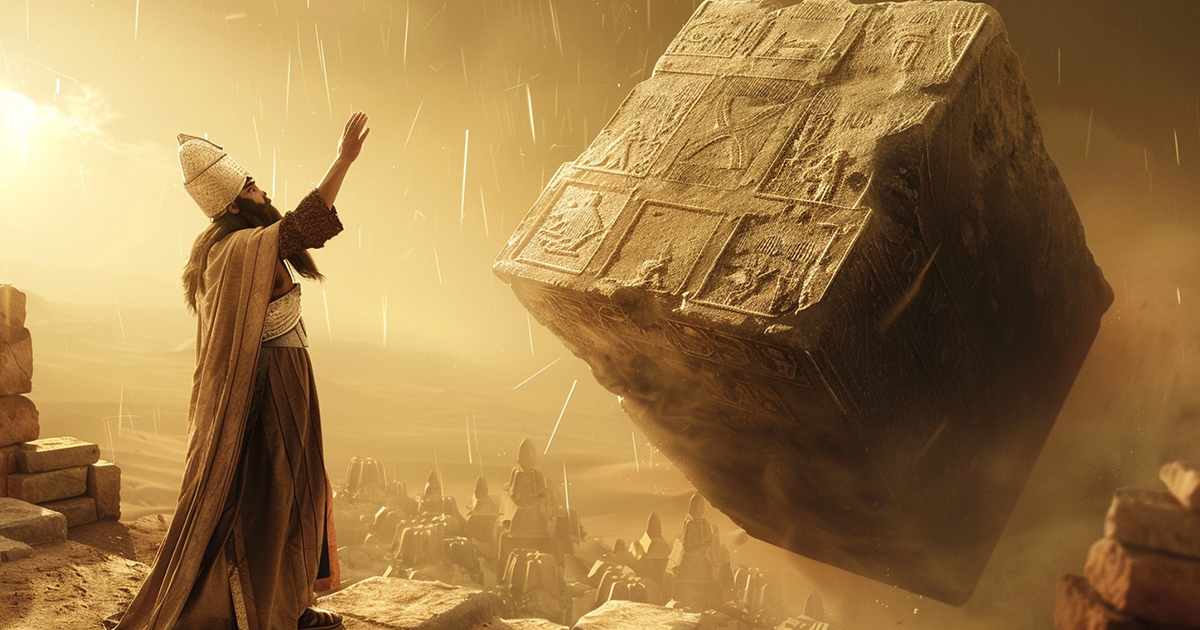In the age of modern marvels, the enigmatic constructions of our ancient ancestors stand as towering testaments to human ingenuity. From the colossal pyramids of Giza to the mysterious Stonehenge, these structures have long puzzled archaeologists and historians alike. How did ancient civilizations, devoid of our contemporary machinery, manage to lift and maneuver massive stone blocks with such precision?
Theories abound, ranging from the conventional use of brute force and manpower to the more speculative involvement of extraterrestrial beings. However, amidst these hypotheses lies a fascinating proposition that hints at a lost technological prowess: the concept of acoustic levitation.
Across the globe, remnants of ancient civilizations showcase feats of engineering that defy logical explanation. Take, for instance, the Temple of Jupiter in Lebanon, where three monolithic stones, each weighing an estimated 1,000 tons, stand as a testament to ancient craftsmanship. Similarly, the intricate stone blocks of Puma Punku in Bolivia, weighing around 100 tons each, leave modern minds in awe of their construction.
To put the challenge into perspective, consider the limitations of our contemporary machinery. While a modern loader may lift boulders weighing up to 22 tons, the stones used in ancient constructions far exceed these capabilities. The question then arises: How did our ancestors manage to move stones weighing upwards of 50 tons without the aid of technology?

Mainstream science suggests theories involving manpower, ropes, and ingenuity, yet these explanations often fall short of addressing the sheer scale and precision of ancient constructions. Could there be a missing piece to this ancient puzzle, one that involves the manipulation of sound?
Accounts from ancient texts and folklore hint at the possibility of acoustic levitation techniques employed by ancient civilizations. Stories of levitating stones at sites like Stonehenge and the Great Pyramid of Giza have sparked speculation about the role of sound in ancient engineering.
While the concept of levitation may seem far-fetched, there is scientific merit behind it. As Arthur C. Clarke famously stated, “Any sufficiently advanced technology is indistinguishable from magic.” This notion becomes particularly intriguing when considering the acoustic properties of structures like the Great Pyramid, which amplify sound at specific frequencies.
Beyond the pyramids, other ancient marvels like Nan Madol in Micronesia and the Florida Coral Castle present further mysteries. Anecdotal accounts of acoustic levitation from travelers in the Far East, coupled with modern experiments showcasing the manipulation of sound waves to levitate objects, hint at the possibility of ancient civilizations harnessing similar techniques.
While mainstream archaeology often dismisses alternative theories as pseudo-science, it’s essential to approach these mysteries with an open mind. History is replete with examples of revolutionary ideas initially met with skepticism, only to be later embraced as truth.
As modern science continues to push the boundaries of what is possible, we may yet uncover the secrets behind ancient construction methods. Whether through the manipulation of sound or other innovative techniques, the enigma of monumental stone moving may soon be cracked wide open.
In the quest to unravel the mysteries of our past, one thing remains certain: the ingenuity of our ancient ancestors continues to inspire awe and wonder to this day. As we peer back through the annals of time, let us remain open to the possibility that our ancestors may have possessed a technological sophistication far beyond our current understanding. After all, in the search for truth, anything is possible.

20 thoughts on “Unveiling Ancient Techniques: How the Ancients Moved Massive Stone Blocks Using Levitation”
Comments are closed.